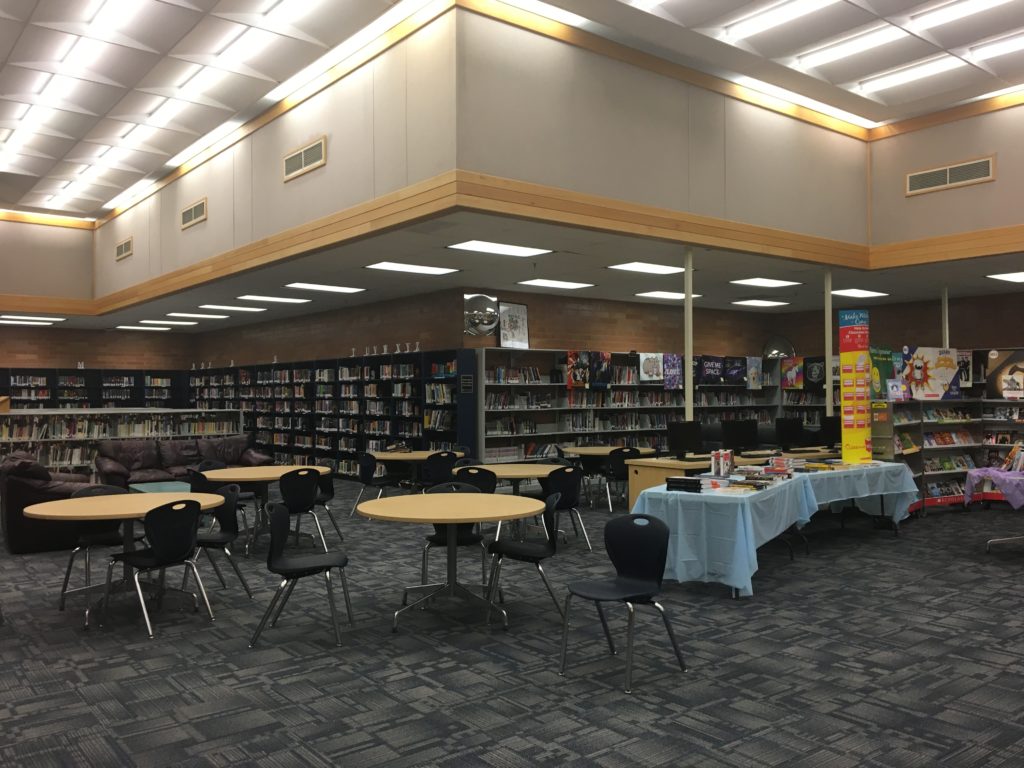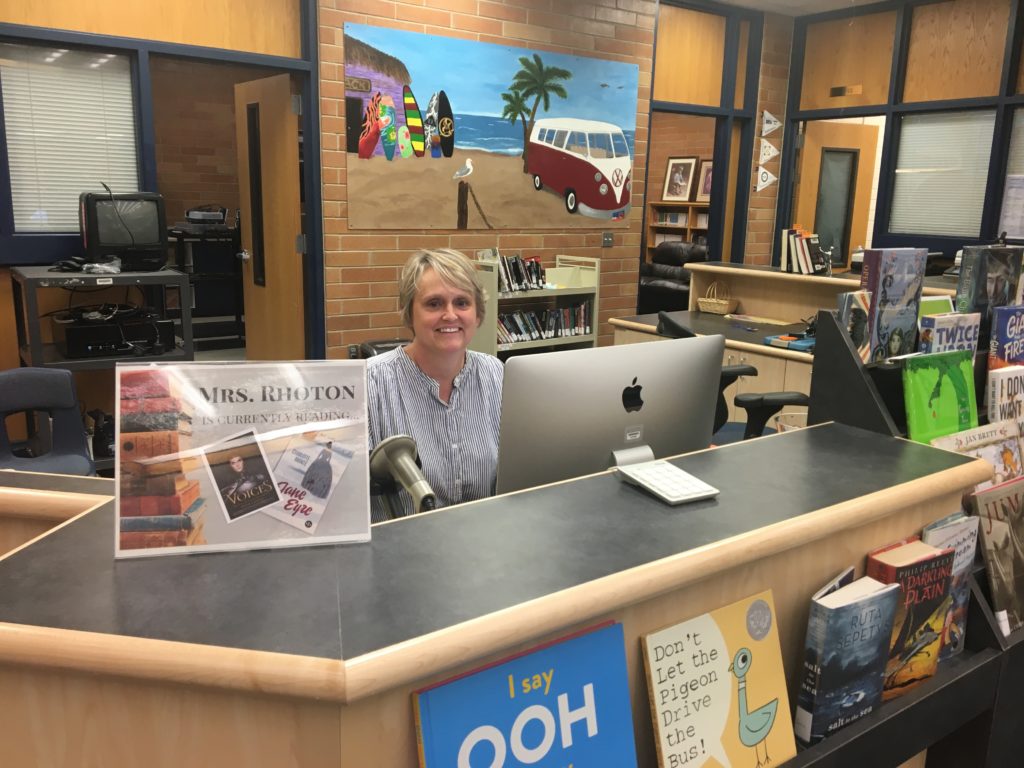
Editor’s Note: This story pairs with, “Libraries expand services, stay on forefront of technology, information sharing“
It’s a bright, sunny day at Mountain Ridge Junior High in Highland, Utah. The sky is blue and cloudless. A bell chimes. Students stream out of classes. Some go outside, but many go straight into a large room filled with books. Boys and girls alike race in, some heading for stacks of books, others eagerly grabbing laptops and sitting at the numerous round tables.
Mountain Ridge Junior High’s library doesn’t just offer its students books and a place to read, it also provides devices they can check out as well as a creative space, called a makerspace, where students can be hands-on and creative.
Librarian Robyn Rhoton also acts as the technology manager for both students and teachers. She helps with video equipment, printing needs and app use. Rhoton teaches classes and organizes activities like a Rubik’s Cube challenge or Banned Book Week for the students to participate in during their lunch hour.

“When I do programming, I hardly have to advertise it. I have kids coming in all the time,” she said. “They want to be here.”
Rhoton has spent her six years at Mountain Ridge Junior High serving the students and working to upgrade the technology. “That old, ‘shush’ kind of library is a thing of the past. Now it’s super technology-based,” she said.
Technology has become more commonplace in libraries over the years. Libraries not only lend out books, but also lend out equipment like cameras and microphones. Provo City Library recently created an audio and visual lab that rents equipment and gives free instructional classes.
“Libraries have a leveling effect. They make resources available to people who may not be able to have access to them because of a variety of costs,” Provo City Library assistant director Carla Gordon said.
Emily Knox, an associate professor in the School of Information Sciences at the University of Illinois at Urbana-Champaign, said libraries are one of the few spaces available that people don’t have to pay to use. Libraries provide information a community needs, she said.
Knox teaches her students what it means to be a professional librarian or an information professional. Knox said information librarians help patrons find is not solely factual. It can come in all sorts of forms like cookbooks, games, computer access or programming.
Tiki Levinson is the director of a small public library in Delta Junction, Alaska. Levinson said libraries are a vital part of life there. “Many people live without a lot of resources, be it in the form of Internet access, a personal computer or cell phone, entertainment options or decent housing. The library helps fill many of those needs even if it is only for a few hours a day,” she said.
Levinson believes that while libraries provide access to things like the internet, they still play an important role in bringing people together. “Libraries are valuable because they are brick and mortar; they offer a place for minds and bodies to interact with others in a positive, constructive way,” Levinson said.
Libraries give people a space for social conversations, said Wanda Brown, president of the American Library Association. Brown believes libraries can help people learn how to be sociable and work with others from diverse backgrounds.
In 2019, people are exposed to information 24/7, and there is a widespread belief that “fake news” is rampant. Because of this, Eric Jennings said libraries and librarians play a larger and more important role in society to teach people how to sift through information to find what is true and valuable.
“Librarians can help students understand the complexities that are involved in evaluating information sources,” said Jennings, who is an associate professor and head of user services at the University of Wisconsin–Eau Claire’s McIntyre Library.
In his article, “The Relevance of Academic Libraries in the Twenty-First Century,” Jennings describes three roles of libraries: to engage, educate and empower. “Empowering our users to understand information is one of the most difficult things we do,” he said.
Librarians teach people information literacy by providing personal attention and helping patrons find information in all different formats — things Jennings said Google cannot do.
All forms of libraries — public, academic and in-school — play a more critical role than they ever have, said Jenny Olsen, the librarian at Alta High School in Sandy, Utah. Olsen said understanding bias is crucial for everyone.
“Teaching students to evaluate information based on credibility, relevance, authority, accuracy and purpose is not only necessary for working on school projects, but also for evaluating their social media feed,” Olsen said.
Technology has required adaptation and change, and Knox believes libraries have always been on the forefront. “Every time there was a new revolution in information, libraries have dealt with it,” she said.




